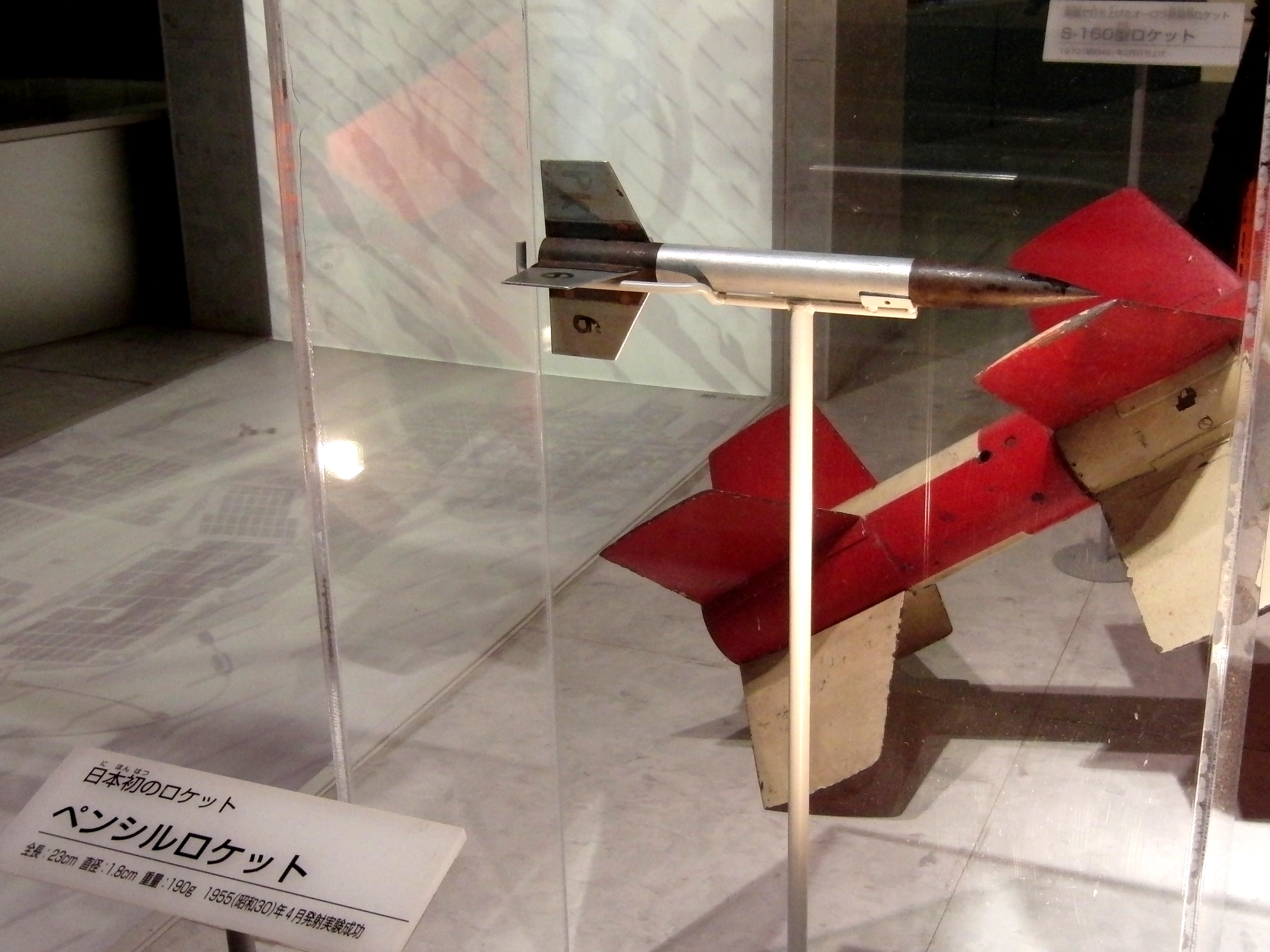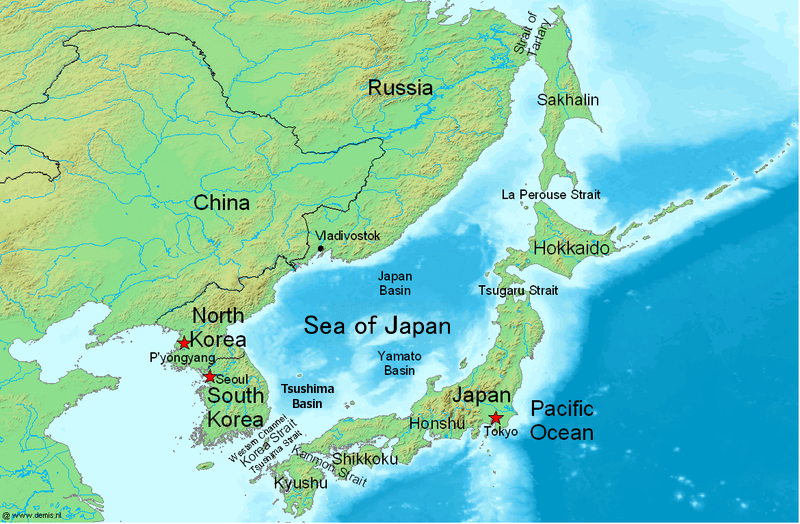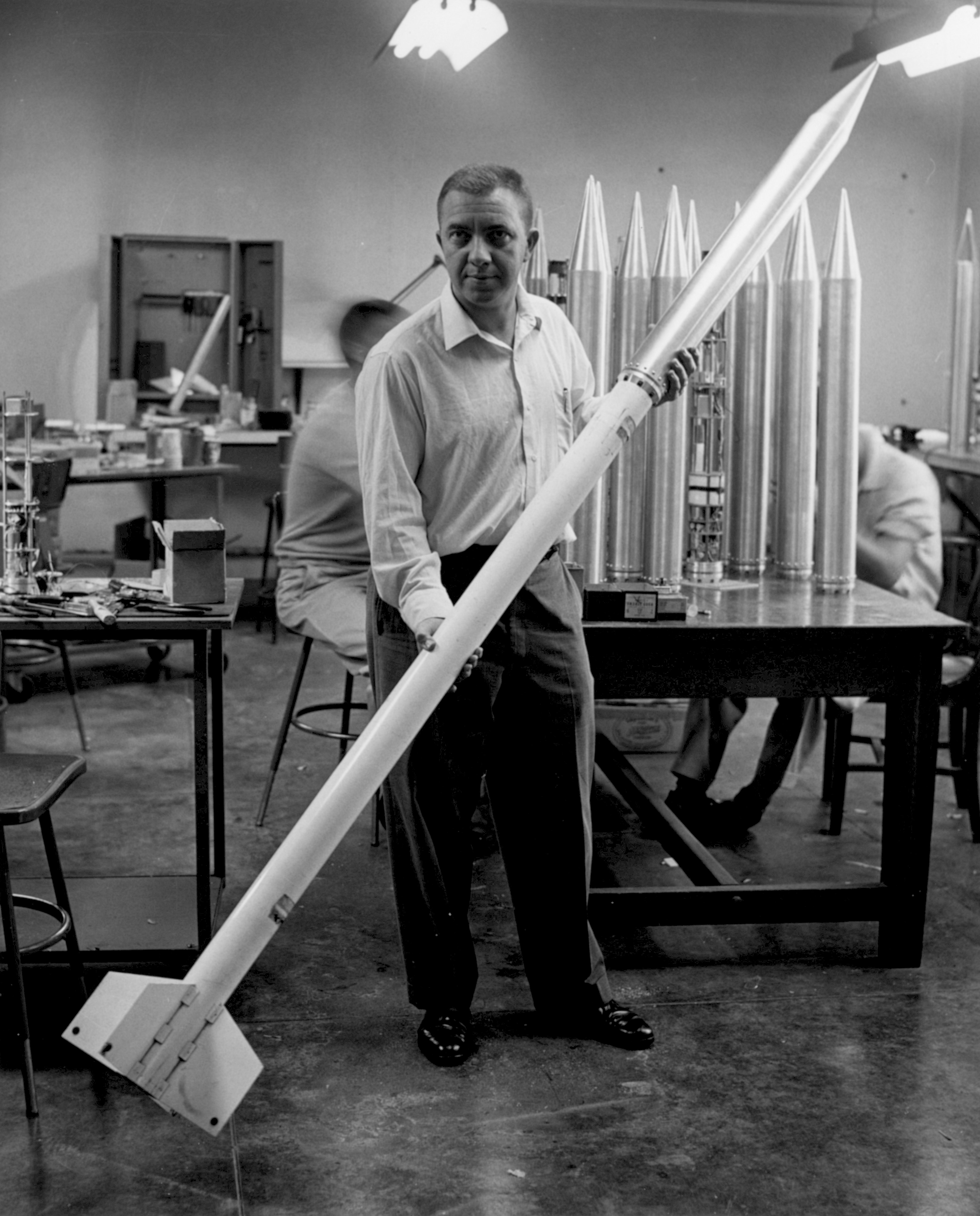|
Space Program Of Japan
The Japanese space program () originated in the mid-1950s as a research group led by Hideo Itokawa at the University of Tokyo. The size of the rockets produced gradually increased from under at the start of the project, to over by the mid-1960s. The aim of the original research project was to launch a man-made satellite. By the 1960s, two organizations, the Institute of Space and Astronautical Science (ISAS) and the National Space Development Agency of Japan (NASDA), were developing their own rockets. After experiencing numerous failures in the 1990s and 2000s, ISAS and NASDA merged — along with the National Aerospace Laboratory of Japan (NAL) — to form the unified Japan Aerospace Exploration Agency (JAXA) in 2003. In recent years, Japanese space policy has been shaped by the US-Japan alliance and intensifying great power competition. History After World War II, many aeronautical engineers lost their jobs as aircraft development was banned under the US Occupation of Ja ... [...More Info...] [...Related Items...] OR: [Wikipedia] [Google] [Baidu] |
H-IIA
H-IIA (H-2A) is an active expendable launch system operated by Mitsubishi Heavy Industries (MHI) for the Japan Aerospace Exploration Agency. These liquid fuel rockets have been used to launch satellites into geostationary orbit; lunar orbiting spacecraft; '' Akatsuki'', which studied the planet Venus; and the Emirates Mars Mission, which was launched to Mars in July 2020. Launches occur at the Tanegashima Space Center. The H-IIA first flew in 2001. , H-IIA rockets were launched 49 times, including 43 consecutive missions without a failure, dating back to 29 November 2003. Production and management of the H-IIA shifted from JAXA to MHI on 1 April 2007. Flight 13, which launched the lunar orbiter SELENE, was the first H-IIA launched after this privatization. The H-IIA is a derivative of the earlier H-II rocket, substantially redesigned to improve reliability and minimize costs. There have been four variants, with two in active service (as of 2020) for various purposes. A d ... [...More Info...] [...Related Items...] OR: [Wikipedia] [Google] [Baidu] |
Tokyo University
The University of Tokyo (, abbreviated as in Japanese and UTokyo in English) is a public research university in Bunkyō, Tokyo, Japan. Founded in 1877 as the nation's first modern university by the merger of several pre-westernisation era institutions, its direct precursors include the '' Tenmongata'', founded in 1684, and the Shōheizaka Institute. Although established under its current name, the university was renamed in 1886 and was further retitled to distinguish it from other Imperial Universities established later. It served under this name until the official dissolution of the Empire of Japan in 1947, when it reverted to its original name. Today, the university consists of 10 faculties, 15 graduate schools, and 11 affiliated research institutes. As of 2023, it has a total of 13,974 undergraduate students and 14,258 graduate students. The majority of the university's educational and research facilities are concentrated within its three main Tokyo campuses: Hongō, ... [...More Info...] [...Related Items...] OR: [Wikipedia] [Google] [Baidu] |
Kagoshima Space Center
The is a space launch facility in the Japanese town of Kimotsuki, Kagoshima, Kimotsuki, Kagoshima Prefecture. Before the establishment of the Japan Aerospace Exploration Agency, JAXA space agency in 2003, it was simply called the (KSC). All of Japan's scientific satellites were launched from Uchinoura prior to the M-V launch vehicles being decommissioned in 2006. It continues to be used for suborbital launches, stratospheric balloons and has also been used for the Epsilon (rocket), Epsilon orbital launch vehicle. Additionally, the center has antennas for communication with interplanetary space probes. History Established in February 1962, the Kagoshima Space Center (KSC) was constructed on the Pacific coast of Kagoshima Prefecture in Uchinoura, Kagoshima, Uchinoura (now part of Kimotsuki, Kagoshima, Kimotsuki) for the purpose of launching large rockets with probe payloads. Prior to establishment of KSC, test launches of the Pencil Rocket, Baby Rocket and Kappa Rocket had been ... [...More Info...] [...Related Items...] OR: [Wikipedia] [Google] [Baidu] |
Sea Of Japan
The Sea of Japan is the marginal sea between the Japanese archipelago, Sakhalin, the Korean Peninsula, and the mainland of the Russian Far East. The Japanese archipelago separates the sea from the Pacific Ocean. Like the Mediterranean Sea, it has almost no tides due to its nearly complete enclosure from the Pacific Ocean. This isolation also affects faunal diversity and salinity, both of which are lower than in the open ocean. The sea has no large islands, bays or capes. Its water balance is mostly determined by the inflow and outflow through the straits connecting it to the neighboring seas and the Pacific Ocean. Few rivers discharge into the sea and their total contribution to the water exchange is within 1%. The seawater has an elevated concentration of Oxygen saturation, dissolved oxygen that results in high biological productivity. Therefore, fishing is the dominant economic activity in the region. The intensity of shipments across the sea has been moderate owing to politi ... [...More Info...] [...Related Items...] OR: [Wikipedia] [Google] [Baidu] |
Downrange
Downrange, or down range, is the horizontal distance traveled by a spacecraft, or the spacecraft's horizontal distance from the launch site. More often, it is used as an adverb or adjective specifying the direction of that travel being measured in a horizontal direction. In military slang, ''downrange'' is a term for being deployed overseas, usually in a war zone. It is also the name of a comic strip published in the newspaper Stars and Stripes. It can also refer to the direction of fire: away from the source and in the direction of the target. In the 1960s and 1970s, a down range tracking system existed at Gulkula, in the Northern Territory of Australia, to track rockets launched from the Woomera Test Range in South Australia South Australia (commonly abbreviated as SA) is a States and territories of Australia, state in the southern central part of Australia. With a total land area of , it is the fourth-largest of Australia's states and territories by area, which in ... [...More Info...] [...Related Items...] OR: [Wikipedia] [Google] [Baidu] |
Trial And Error
Trial and error is a fundamental method of problem-solving characterized by repeated, varied attempts which are continued until success, or until the practicer stops trying. According to W.H. Thorpe, the term was devised by C. Lloyd Morgan (1852–1936) after trying out similar phrases "trial and failure" and "trial and practice". Under Morgan's Canon, animal behaviour should be explained in the simplest possible way. Where behavior seems to imply higher mental processes, it might be explained by trial-and-error learning. An example is a skillful way in which his terrier Tony opened the garden gate, easily misunderstood as an insightful act by someone seeing the final behavior. Lloyd Morgan, however, had watched and recorded the series of approximations by which the dog had gradually learned the response, and could demonstrate that no insight was required to explain it. Edward Lee Thorndike was the initiator of the theory of trial and error learning based on the findings h ... [...More Info...] [...Related Items...] OR: [Wikipedia] [Google] [Baidu] |
Radar
Radar is a system that uses radio waves to determine the distance ('' ranging''), direction ( azimuth and elevation angles), and radial velocity of objects relative to the site. It is a radiodetermination method used to detect and track aircraft, ships, spacecraft, guided missiles, motor vehicles, map weather formations, and terrain. The term ''RADAR'' was coined in 1940 by the United States Navy as an acronym for "radio detection and ranging". The term ''radar'' has since entered English and other languages as an anacronym, a common noun, losing all capitalization. A radar system consists of a transmitter producing electromagnetic waves in the radio or microwave domain, a transmitting antenna, a receiving antenna (often the same antenna is used for transmitting and receiving) and a receiver and processor to determine properties of the objects. Radio waves (pulsed or continuous) from the transmitter reflect off the objects and return to the receiver, giving ... [...More Info...] [...Related Items...] OR: [Wikipedia] [Google] [Baidu] |
Kappa (rocket)
Kappa was a family of solid-fuel Japanese sounding rocket A sounding rocket or rocketsonde, sometimes called a research rocket or a suborbital rocket, is an instrument-carrying rocket designed to take measurements and perform scientific experiments during its sub-orbital flight. The rockets are often ...s, which were built starting from 1956. Rockets Kappa 1 * Ceiling: 40 km * Takeoff thrust: 10.00 kN * Diameter: 0.13 m * Length: 2.70 m Kappa 2 * Ceiling: 40 km * Mass: 300 kg * Diameter: 0.22 m * Length: 5 m Kappa 6 (in two stages) * Pay load: 20 kg * Ceiling: 60 km * Takeoff weight: 270 kg * Diameter: 0.25 m * Length: 5.61 m Kappa 7 * Ceiling: 50 km * Diameter: 0.42 m * Length: 8.70 m Kappa 8 (in two stages) * Pay load: 50 kg * Ceiling: 160 km * Takeoff weight: 1500 kg * Diameter: 0.42 m * Length: 10.90 m Kappa 4 * Ceiling: 80 km * Takeoff thrust: 105.00 kN * Diameter: 0.33 m * Length: 5.90 m Kappa 9L ... [...More Info...] [...Related Items...] OR: [Wikipedia] [Google] [Baidu] |
Rockoon
A rockoon (from ''rocket'' and ''balloon'') is a sounding rocket that, rather than being lit immediately while still on the ground, is first carried into the upper atmosphere by a gas-filled balloon, then separated from the balloon and ignited. This allows the rocket to achieve a higher altitude, as the rocket does not have to move under power through the lower and thicker layers of the atmosphere. A 2016 study by '' Acta Astronautica'' concluded that low-mass and high altitude launches give the best results. The original concept was developed by Cmdr. Lee Lewis, Cmdr. G. Halvorson, S. F. Singer, and James A. Van Allen during the Aerobee rocket firing cruise of the U.S.S. ''Norton Sound'' on March 1, 1949. A serious disadvantage is that unpiloted balloons cannot be steered, and consequently the location from which the rocket is launched can be uncertain. Therefore, a large area for the fall of the rocket is required for safety reasons. The rockoons that Robert Ellis worked ... [...More Info...] [...Related Items...] OR: [Wikipedia] [Google] [Baidu] |
Akita Prefecture
is a Prefectures of Japan, prefecture of Japan located in the Tōhoku region of Honshu.Nussbaum, Louis-Frédéric. (2005). "Provinces and prefectures" in ; "Tōhoku" in . Its population is estimated 915,691 as of 1 August 2023 and its geographic area is 11,637 Square kilometre, km2 (4,493 sq mi). Akita Prefecture is bordered by Aomori Prefecture to the north, Iwate Prefecture to the east, Miyagi Prefecture to the southeast, and Yamagata Prefecture to the south. Akita, Akita, Akita is the capital and largest city of Akita Prefecture. Other major cities include Yokote, Akita, Yokote, Daisen, Akita, Daisen, and Yurihonjō. Akita Prefecture is located on the coast of the Sea of Japan and extends east to the Ōu Mountains, the longest mountain range in Japan, at the border with Iwate Prefecture. Akita Prefecture formed the northern half of the historic Dewa Province with Yamagata Prefecture. History The region of Akita was created from the ancient provinces of Dewa Province, De ... [...More Info...] [...Related Items...] OR: [Wikipedia] [Google] [Baidu] |
International Geophysical Year
The International Geophysical Year (IGY; ), also referred to as the third International Polar Year, was an international scientific project that lasted from 1 July 1957 to 31 December 1958. It marked the end of a long period during the Cold War when scientific interchange between East and West had been seriously interrupted. Sixty-seven countries participated in IGY projects, although one notable exception was the mainland China, People's Republic of China, which was protesting against the participation of the Republic of China (Taiwan). East and West agreed to nominate the Belgian Marcel Nicolet as secretary general of the associated international organization. The IGY encompassed fourteen Earth science disciplines: Auroral light, aurora, airglow, cosmic rays, Earth's magnetic field, geomagnetism, gravity, ionosphere, ionospheric physics, longitude and latitude determinations (precision mapping), meteorology, oceanography, Ionizing radiation, nuclear radiation, glaciology, seismo ... [...More Info...] [...Related Items...] OR: [Wikipedia] [Google] [Baidu] |








